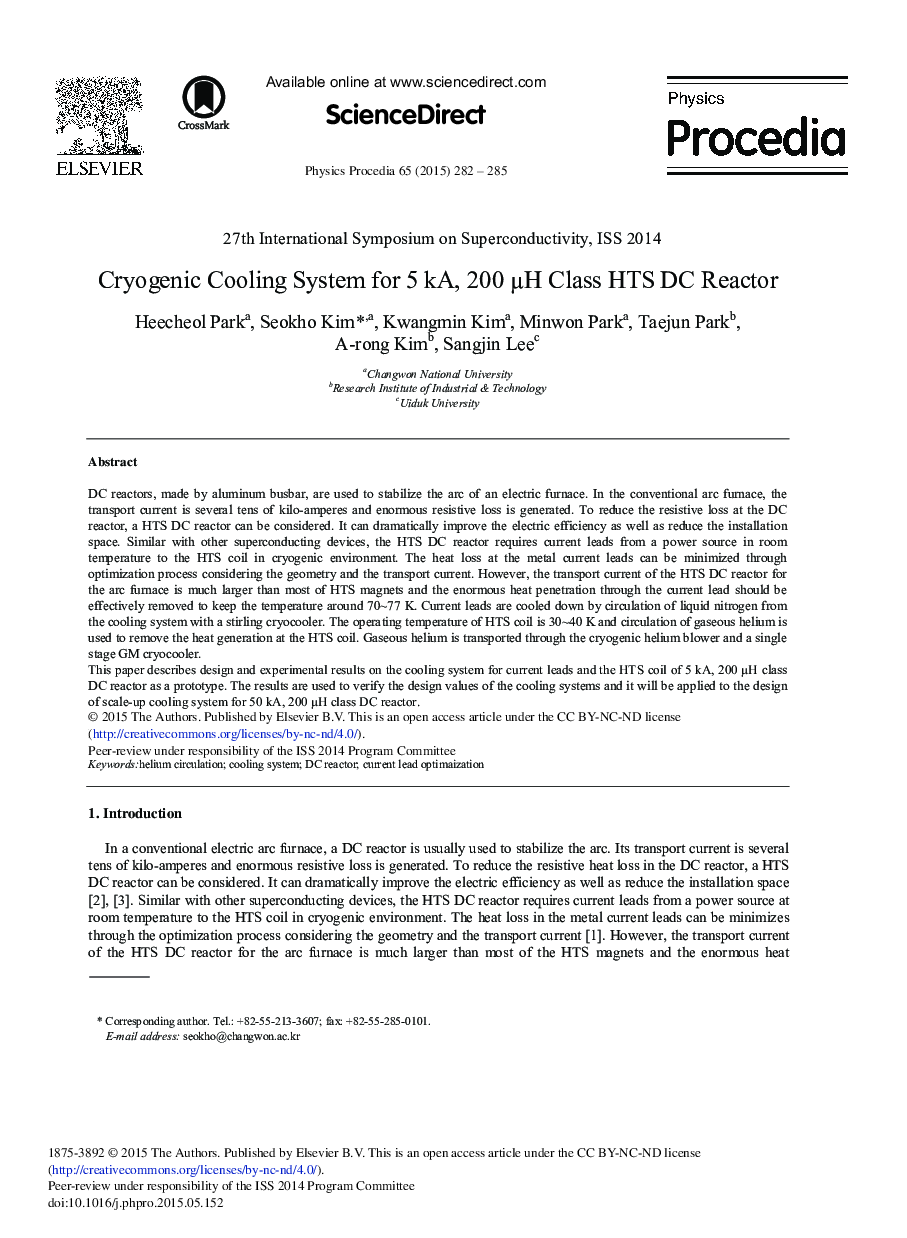| کد مقاله | کد نشریه | سال انتشار | مقاله انگلیسی | نسخه تمام متن |
|---|---|---|---|---|
| 1869022 | 1530959 | 2015 | 4 صفحه PDF | دانلود رایگان |

DC reactors, made by aluminum busbar, are used to stabilize the arc of an electric furnace. In the conventional arc furnace, the transport current is several tens of kilo-amperes and enormous resistive loss is generated. To reduce the resistive loss at the DC reactor, a HTS DC reactor can be considered. It can dramatically improve the electric efficiency as well as reduce the installation space. Similar with other superconducting devices, the HTS DC reactor requires current leads from a power source in room temperature to the HTS coil in cryogenic environment. The heat loss at the metal current leads can be minimized through optimization process considering the geometry and the transport current. However, the transport current of the HTS DC reactor for the arc furnace is much larger than most of HTS magnets and the enormous heat penetration through the current lead should be effectively removed to keep the temperature around 70∼77 K. Current leads are cooled down by circulation of liquid nitrogen from the cooling system with a stirling cryocooler. The operating temperature of HTS coil is 30∼40 K and circulation of gaseous helium is used to remove the heat generation at the HTS coil. Gaseous helium is transported through the cryogenic helium blower and a single stage GM cryocooler.This paper describes design and experimental results on the cooling system for current leads and the HTS coil of 5 kA, 200 μH class DC reactor as a prototype. The results are used to verify the design values of the cooling systems and it will be applied to the design of scale-up cooling system for 50 kA, 200 μH class DC reactor.
Journal: Physics Procedia - Volume 65, 2015, Pages 282-285